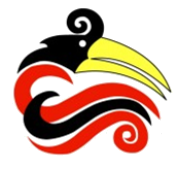Ooooooooooooohhhhhhhhhhaaaaa !!!!
Etymology Of The Name “Kuching”:
Kuching means ‘cat’ in Malay and there are a number of suggestions as to how Sarawak’s capital acquired the name. Local legend has it that James Brooke (see section on ‘history’), pointing towards the settlement across the river, enquired what it was called. Whoever he asked, mistakenly thought he was pointing at a passing cat. However, there is also a contradiction regarding the common story of James Brooke whose indication was misinterpreted by the folks of this city. Malaysians who live in Sarawak usually refers to cats as “pusak” instead of Kuching. Therefore, there is a little doubt about how true the story was. If that seems a little far-fetched, the Sarawak Museum offers a few more plausible alternatives, the most likely of which is that the town may have originally have been known as Cochin – port – a word commonly used across India and Indochina. Before Brooke arrived, the city of Kuching was known as Sarawak.
Some folks also depict that the name of the city has been derived from a fruit called “Mata Kuching” which is widely available in Malaysia and Indonesia. There is a hill called Bukit Mata Kuching which is thought to be named after this fruit. Known from a letter of a British woman which was written to her son, Kuching is actually named after the Kuching River, a tidal stream that runs from Tua Pek kong Temple to Chinese History Museum and located at foot of the hill. At present the river does not exist due to the silt deposits.
History of Kuching:
Established in 1827 as the third capital city of Sarawak after Santubong and Lidah Tanah, Kuching has been a very important part of Borneo. Being ruled by the Sultanate of Brunei almost 200 years back, Sarawak or Kuching was evolved into a British province as soon as James Brooke began his reign as a form of reward. Brookes reigned in Kuching throughout three generations and made a lot of changes in the entire setting. He introduced the code of laws and established his home at the northern bank of the Sarawak River. The Astana Palace which is a famous tourist spot is established right beside the original Brooke house. During the reign of James Brooke, piracy was banned and the entire was forced to abide by certain laws. In 1868, when Charles brooke ascended the throne, he paid a great deal of attention in upgrading the town. New building were erected and the drainage system was renovated. Old shops were transformed into brick buildings. The incident of the great fire had damaged the entire city and it sprang up from the ashes during the kingdom of James Brooke. It can be said that only during the rule of James Brooke, Kuching developed from its ruinous conditions to a major city.
Until the Japanese occupied this place, Kuching was ruled by the Brooke family. Since December 1941, this large city was handed over to the Japanese forces. British Commonwealth invaded Kuching in 1946 and finally achieved independence in the year 1963.
